Service hotline
+86 0755-83044319
release time:2023-09-14Author source:SlkorBrowse:13275
It is projected that processor revenue will reach 242 billion yuan by 2028.
Market research firm Yole Group has stated that the processor market had an extraordinary year in 2021, reaching a historical high of $155.5 billion with a growth rate of 22.3%. However, the following year saw a slight decline, with revenue stabilizing at $154 billion. The main factors contributing to this decrease were in the CPU sector, which was primarily affected by reduced shipments in the PC category and intensified competition from non-x86 APUs.
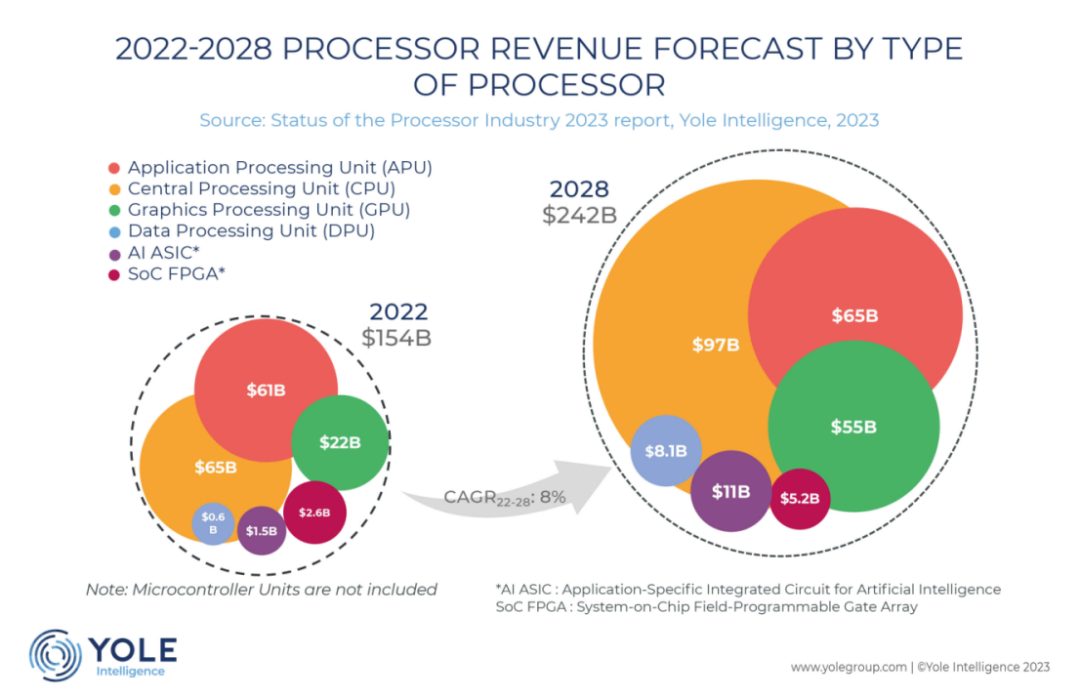
Adrian Sanchez, a computing and software technology market analyst at Yole Intelligence's Semiconductor, Memory, and Computing division, believes that the GPU market also experienced a slight contraction, dropping to $22.6 billion in 2022. This decline can be mainly attributed to decreased shipments of PC GPUs and reduced interest in cryptocurrency. With the ongoing growth trend of generative artificial intelligence, a recovery of 3% is expected in 2023, reaching $23.3 billion.
In contrast, the APU market saw significant growth in 2022, particularly in the data center segment, resulting in a shift in revenue distribution. While the total revenue for processors is projected to reach $242 billion by 2028, CPUs are expected to maintain their dominance, while GPUs are anticipated to experience significant growth, with the data center market expected to be the fastest-growing segment.
More advanced processor iterations require higher circuit integration, particularly larger logic blocks and SRAM. In the past, advancing towards denser logic was as simple as the next shrink in lithography. However, as transistor sizes continue to decrease, their manufacturing becomes more complex and costly. In 2022, the industry will approach the end of the finFET era, with the emergence of 3nm and 2nm fully gate-all-around architectures.
John Lorenz, a senior technology and market analyst for computing and software at Yole Intelligence, stated, "As the design costs for these nodes continue to rise, there is increasing interest in alternative design and integration approaches such as Chiplets. The concept of Chiplets satisfies the need for smaller, reusable designs using advanced packaging technologies. The surge in chiplet integration is driving the growth of 2.5D and 3D packaging."
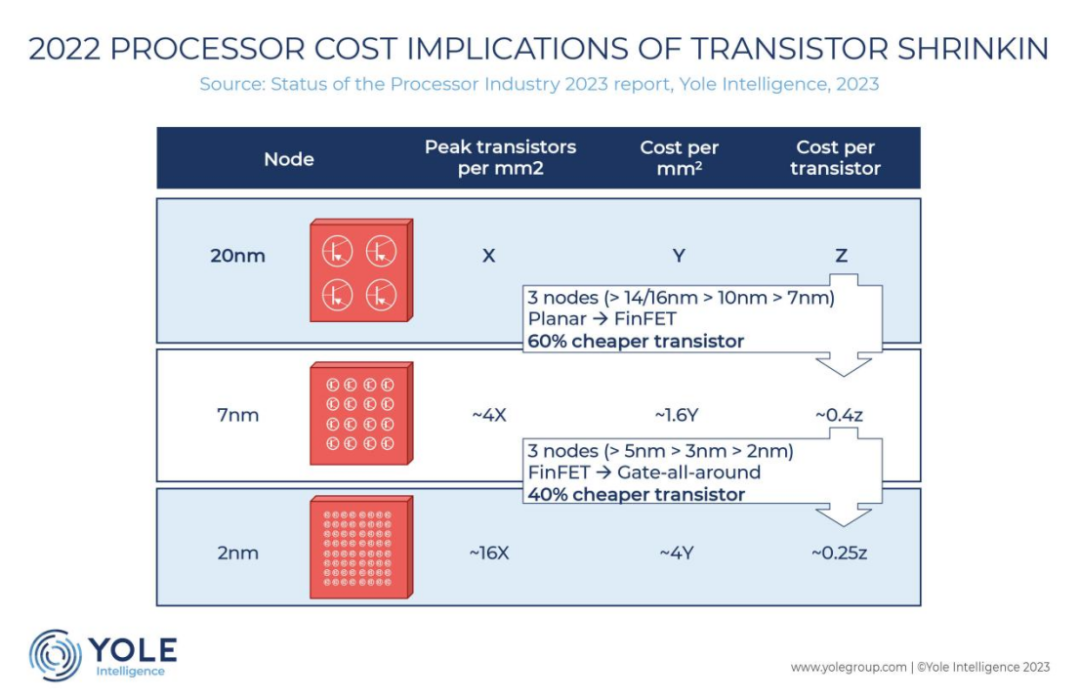
This evolution is led by major manufacturers such as Intel, [敏感词], AMD, NVIDIA, and Samsung. Yole Intelligence reveals in this new report that high-performance packaging platforms like silicon interposers and hybrid bonding are becoming increasingly crucial across various applications.
The processor market is primarily dominated by a few major players: Intel, AMD, NVIDIA, and Qualcomm, which together hold 54% of the market share.
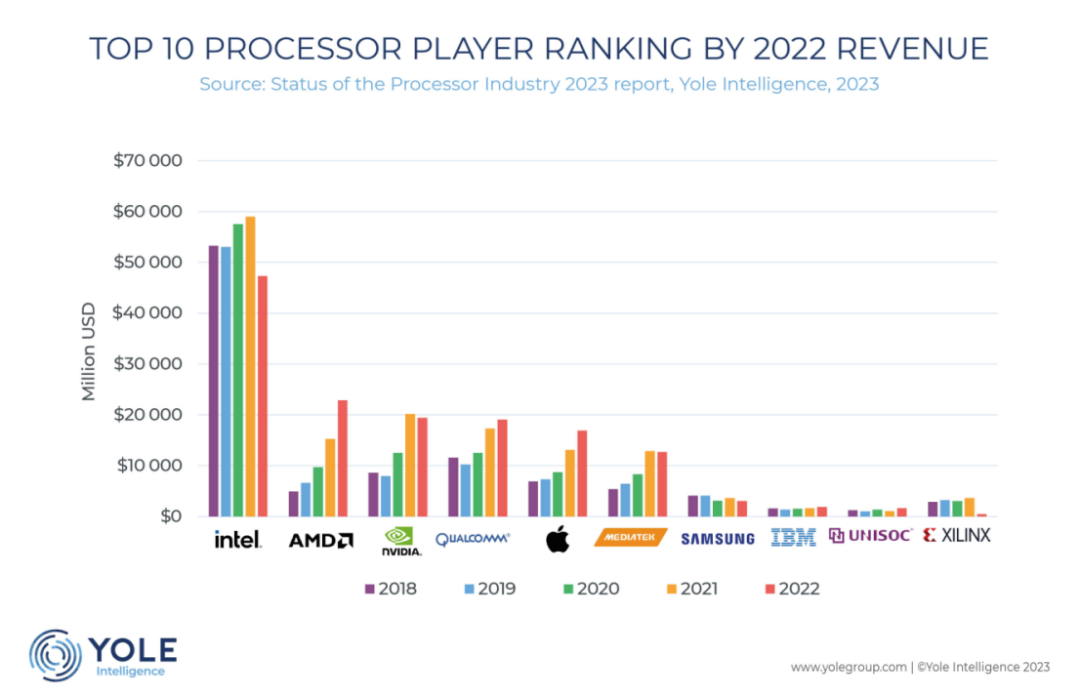
With new entrants and tech giants like Amazon and Alibaba entering the CPU field, competition is becoming increasingly intense. Qualcomm, MediaTek, and Apple are leading in the APU market, holding a 32% market share. The SoC FPGA and AI ASIC sectors are led by AMD, Intel, as well as tech giants like Google and Amazon.
The landscape of processor startups is dynamic, with significant funding raised, particularly in the AI-focused field where China takes the lead. Driven by investment and a constantly evolving ecosystem, China's semiconductor industry is continuously developing. Notable M&A activities in 2022 included AMD's acquisition of Xilinx and Pensando, Intel's unsuccessful attempt to acquire Tower Semiconductor, and Nvidia's withdrawal from acquiring Arm.
The global CPU shipments in Q2 experienced a year-on-year decline of 23%
According to the latest data from Jon Peddie Research (JPR), global client CPU shipments in the second quarter saw a 17% increase compared to the previous quarter. Intel dominated during these three months, experiencing a significant market share growth of 23%, while AMD's share declined by 5.3%.
JPR's latest report reveals that the global client CPU shipments reached 53.6 million units in the second quarter of 2023, showing growth from the 46 million units in the first quarter. However, this figure still represents a decline compared to the same period last year, with desktop CPU shipments decreasing by 23% and laptop shipments falling by 22%.
It is not surprising that Intel leads the CPU market this quarter, as their 13th-gen entry-level laptop and desktop processors have been widely released. However, AMD has introduced more affordable products, and their Phoenix and Dragon series APUs may find their way into more laptops. The upcoming Strix Point APU also holds promise. Meanwhile, Intel's Raptor Lake Refresh and Meteor Lake chips are set to be unveiled soon.
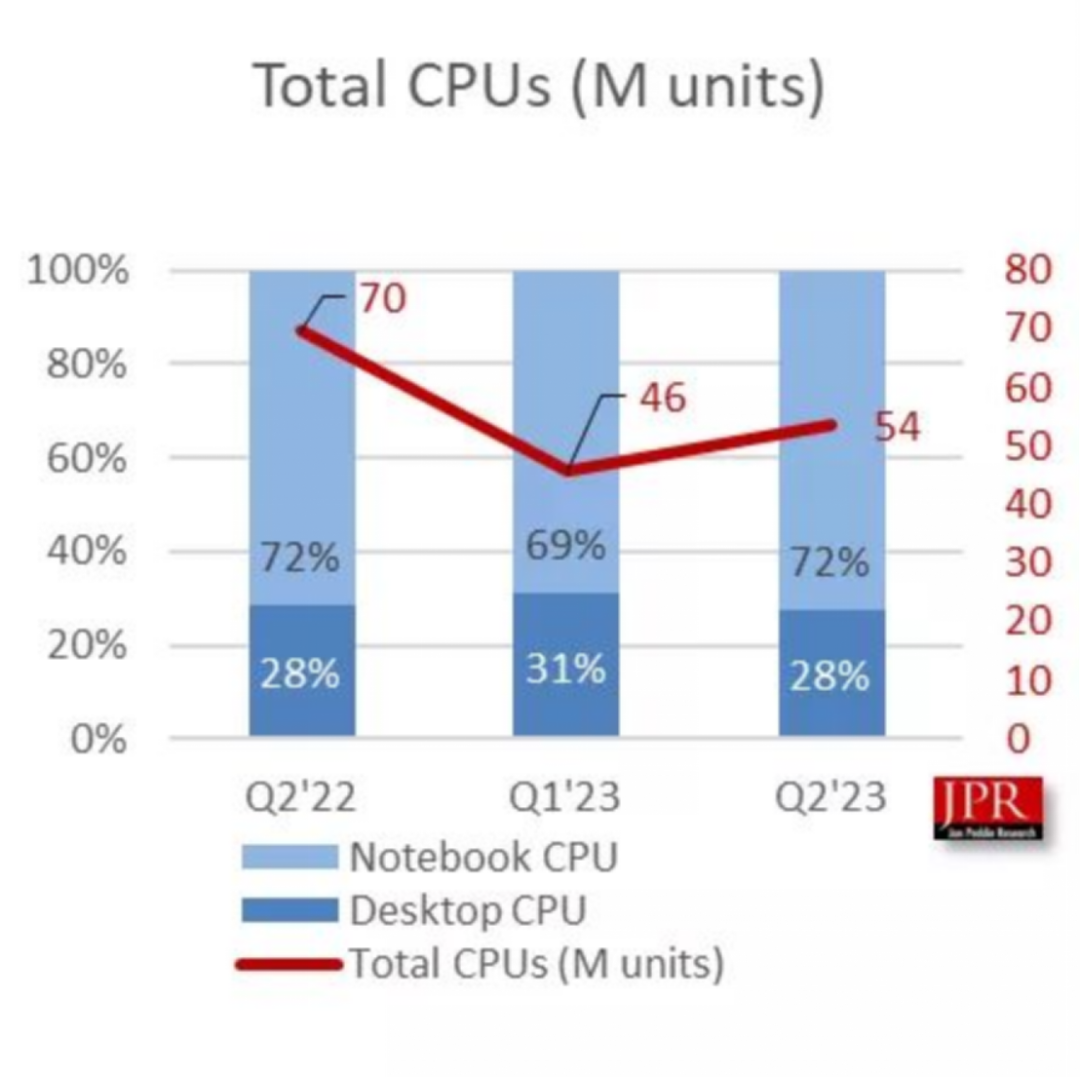
On another note, laptop CPUs accounted for the majority of processor shipments, representing 72% of the total shipments, while desktop CPUs only accounted for 28%.
Jon Peddie stated, "The growth in client CPU shipments compared to the previous quarter is positive and encouraging news, considering the disappointing performance of this quarter and the past two years. Integrated graphics shipments also saw a slight increase compared to the previous quarter, which is not surprising given that most CPUs come with built-in GPUs. The forecast for the next quarter is optimistic, with both AMD and Intel projecting positive growth, albeit modest."
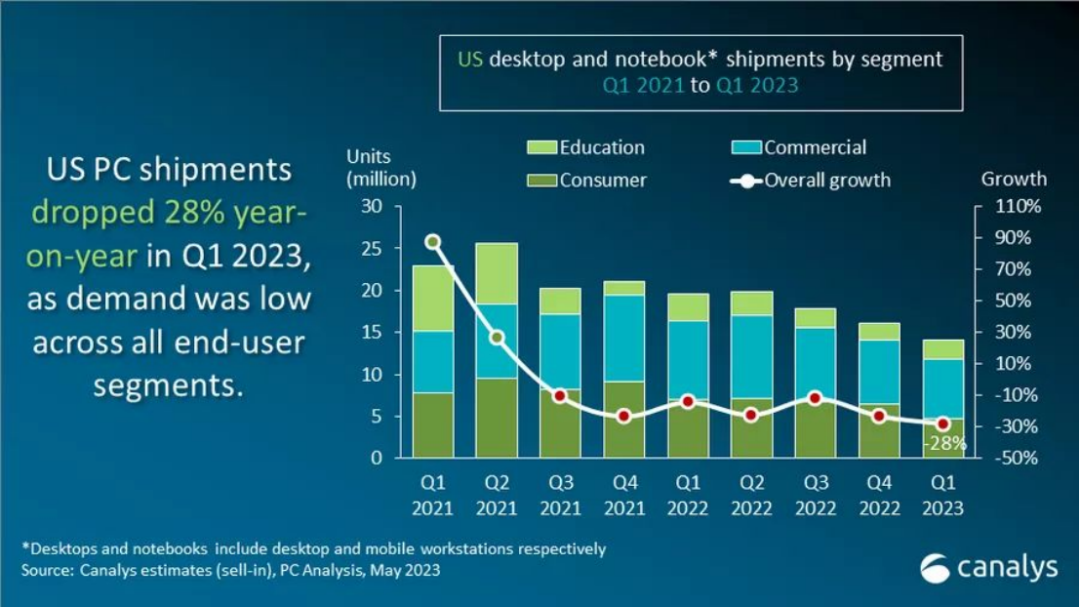
JPR's report is consistent with the recent predictions from the analysis firm Canalys, indicating that the PC market will begin to recover in late 2023. The company points out that due to sluggish demand from all end-users, desktop and laptop shipments hit a low point of 14 million units in the first quarter, marking a 28% year-on-year decline.
Another analysis firm also notes a slight improvement in the second quarter. International Data Corporation (IDC) states in their article that global shipments decreased by 13.4% compared to the same period last year, which is a smaller decline than in the first quarter. IDC's preliminary report suggests that weak demand from consumers and business customers, continued macroeconomic downturn, and changes in IT budgets have been the contributing factors to the 18-month slump.









Site Map | 萨科微 | 金航标 | Slkor | Kinghelm
RU | FR | DE | IT | ES | PT | JA | KO | AR | TR | TH | MS | VI | MG | FA | ZH-TW | HR | BG | SD| GD | SN | SM | PS | LB | KY | KU | HAW | CO | AM | UZ | TG | SU | ST | ML | KK | NY | ZU | YO | TE | TA | SO| PA| NE | MN | MI | LA | LO | KM | KN
| JW | IG | HMN | HA | EO | CEB | BS | BN | UR | HT | KA | EU | AZ | HY | YI |MK | IS | BE | CY | GA | SW | SV | AF | FA | TR | TH | MT | HU | GL | ET | NL | DA | CS | FI | EL | HI | NO | PL | RO | CA | TL | IW | LV | ID | LT | SR | SQ | SL | UK
Copyright ©2015-2025 Shenzhen Slkor Micro Semicon Co., Ltd